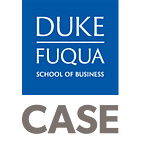One Acre Fund: Pearls of Scaling Wisdom
As part of this Scaling Snapshot, see also One Acre Fund’s Organizational Overview, Getting Ready for Scale, and Scaling Strategies. You can find the full scaling snapshot PDF here.
1. Let a Bold Vision Guide You.
1 Early in our founding, we established an audacious goal: to serve one million farmers by 2020, helping them to dramatically increase their income. While we had a solution that we were testing, we framed our scaling goals around the problem — not around the particular solution or our organization. This bold vision drove the refinement of our core model — our eventual partnership and advocacy work — and helped us remain focused on the scale and urgency of the problem that we wanted to address
2. An Earned Income Model Can Be Powerful.
We were founded with the idea that earned income would be an important component of our model. Many donors were drawn to our approach since we could sustain pieces of our program through earned income and their donor dollars could go farther — so they were essentially co-investing with the farmers, in a productive asset for farmers. We can invest donor funds in innovation and advocacy rather than solely programmatic costs. The model has also had a major impact on the robustness of our product and relationship with farmers; as our founder Andrew Youn has said, “a revenue model charging people for what you do really dignifies them…and it really helps us listen to them and learn from them.”
3. Take Pauses When Needed.
At certain points in our history, we have made difficult — but ultimately good — decisions to slow down scale in certain markets when our SROI was lagging. We are achieving scale but are not constantly entering new places and adding new services; we have taken a number of pauses to get our impact and cost equation right before we grow further. We have made it a priority to communicate any pauses — and the rationale for them — candidly with funders, who have greatly appreciated our transparency.
4. Overinvest in Measurement.
4 We have always invested heavily in measurement and believe it has played a significant role in our ability to scale. That investment was a difficult sell in our early days, when we faced pressure to steer all resources toward our program. But it was the right decision as it has allowed us to quickly course-correct when a site is underperforming, to understand which trainings yield the most impact, and to attract more funding over the long run. We do have a balanced approach to measurement, though; for example, we believe that randomized-control trials (RCTs) are important, but not sufficient. RCTs can be done only periodically and in a limited area, but our internal measurement systems allow us to conduct high-quality evaluations every year and collect a wide-range of data points across diverse areas. We can then undertake narrower, gold-standard external evaluations — like RCTs — every few years to validate our internal findings and methodology.
5. It’s OK to Say No.
Saying “no” to partnerships in our early days and maintaining our focus was critical to our ability to scale. It allowed us to have a singular focus on agriculture — as opposed to creeping into related areas such as health, water, and sanitation — and gave us the opportunity to iterate and create a robust core model that we could scale. Now that we have developed strong relationships, proven our core model, and strengthened client retention in our communities, we are more open to partnerships and pursuing different and complementary approaches that will help us achieve our vision of healthy families.
Published September March 2019. Find the full Scaling Snapshot PDF at https://rebrand.ly/oneacrefundscaling.
Authored by Erin Worsham, Kimberly Langsam, and Ellen Martin.
